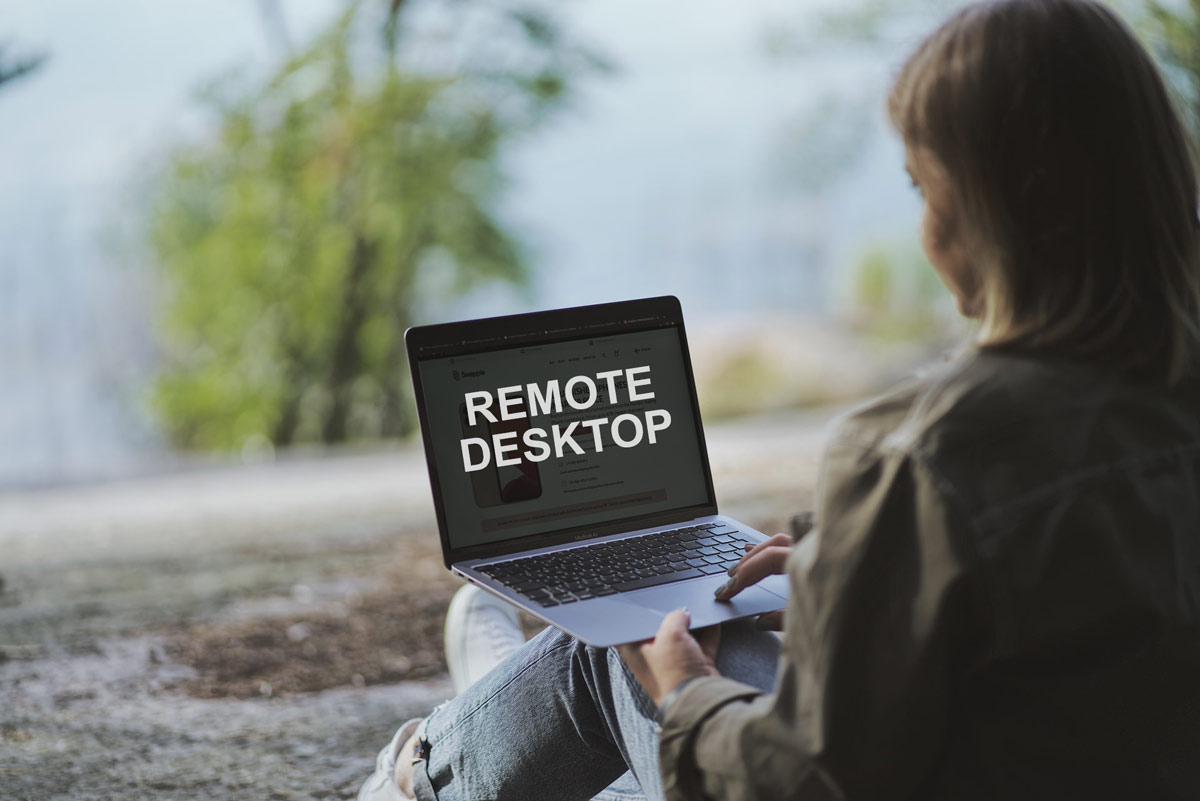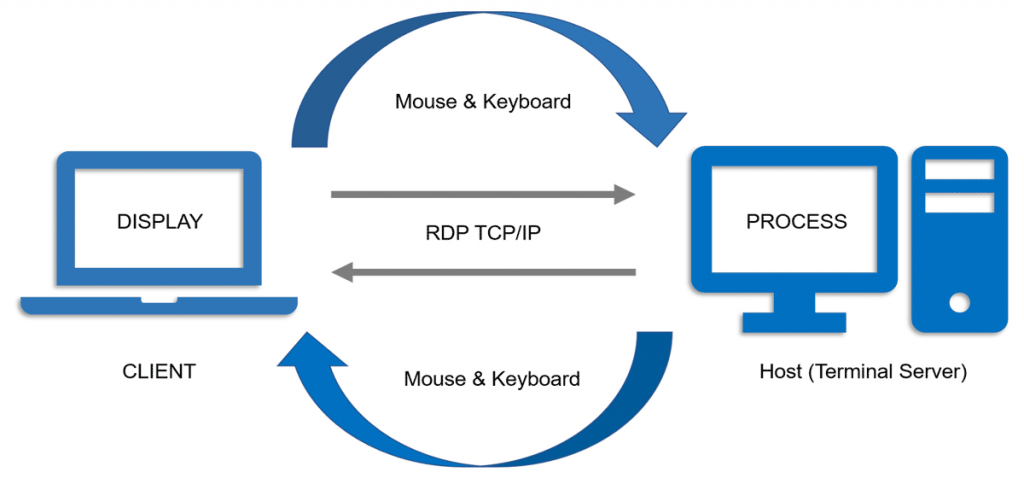
06 Mar How Does Remote Desktop Work?
What is Remote Desktop?
The easiest way to explain Remote Desktop is to say that it is a bit like using remote controlled software. It lets users connect to a specific computer and control it over the internet as if they were right in front of it. If you have ever been on a tech support call and the technician takes over your mouse cursor to run a fix, they are using remote desktop technology. Remote Desktop is a client application that allows a “client” computer to connect to a “host” computer from a remote location. Users can then control and use the applications and files on the host device from anywhere.
How Remote Desktop Works
A basic example of Remote Desktop is connecting your home laptop to your office PC so you can access files, run applications, print documents, etc. on that PC without going into the office. However, the host device does not have to be a PC. It is often a server or virtual server environment in many business use-cases.
With Remote Desktop, the host device powers the software and operating system, and displays it on the client device. Remote Desktop software captures mouse and keyboard inputs from the client device and sends them back to the host machine. For tasks and files that require heavy use of graphics, additional software may be necessary to ensure a smooth, responsive performance.
Here are the basic steps for connecting to a PC using Remote Desktop: The machine you want to access must be turned on and remain on. You may have to change the sleep setting on the host computer to ensure it doesn’t turn off. Remote Desktop is built into Windows machines. To turn it on go to Settings > System > Remote Desktop. Click “Enable” Click Confirm to enable the setting. By default, the options to “keep your PC awake for connections when plugged in” and “make your PC discoverable on private networks” are both enabled. Check out this Microsoft support page for complete instructions on how to use Remote Desktop.
Benefits of Remote Desktop for Business
Along with other remote access technology, Remote Desktop is an extremely important tool for the post-COVID, work-from-home future.
Remote Desktop offers a simple way for IT teams to run patches, updates, diagnostics and apply fixes to machines in their users’ home offices.
A Remote Desktop server allows users to work from any location – at home, on the road, or in the office. A network connection is not required. There is no additional hardware needed to link the remote user to the server. All that is needed is access to the Internet and a web browser.
This appeals to businesses that want to reduce capital costs for hardware and overhead costs pertaining to IT departments. With hosted desktop, upgrades to software and security matters are all handled by the Remote Desktop server company and included in the subscription price.
This setup is ideal for a business with employees working from home or from numerous locations. Everyone with access to the server is working with the same versions of the same applications making the exchange of data smoother. For companies with employees that travel frequently, it is now easier for those employees to log in from anywhere in the world and update files, submit reports and access company information.
Remote desktop computing is a valuable tool for businesses. It is cost-effective, increases productivity and provides users with the same desktop experience they are used to, including applications with which they are already familiar.
What is Remote Desktop Services?
Remote Desktop Services, also known as RDS, is sometimes called Terminal Services. RDS refers to all remote desktop features of the Microsoft Windows Server. Remote Desktop Services delivers technologies that permit clients to link to virtual desktops and remote accessed programs, and enables connections to graphically intensive applications. With Remote Desktop Services, workers can access these remote connections from within the corporate system or from the Internet. This is a common way to remotely access virtual desktops where users can have the same experience from almost any device. Learn More
How Does RDP Work & What is Remote Desktop Connection?
Remote Desktop Protocol (RDP) is part of Remote Desktop Services and is simply what Microsoft once called its proprietary protocol for delivering Remote Desktop through a graphical interface. Microsoft currently refers to their official RDP client software as Remote Desktop Connection (formerly Terminal Services Client). Every version of Windows since Windows XP includes RDC. RDC versions are determined by the version of Windows or by the last applied Windows Service Pack. The client machine runs RDP client software while the host computer must run RDP server software. RDP servers are built into Windows operating systems. There is also an RDP server for Unix and OS X.
Remote Desktop Services Compared to VPN and VDI for business
The key advantage of RDS is its simplicity. RDS is a middle ground solution compared to VPNs and VDIs, in terms of cost, performance and maintenance. However, all of these technologies are often used together in an overall network architecture to ensure performance and security. Learn more: Which Is Better VPN, VDI or RDS?
How Does Remote Desktop Security Work?
Connecting a home computer to a business PC, server or network raises security concerns. Microsoft does provide some standard security features–You can limit the number of users, create account lockouts, require password authentication, enable encryption and even “whitelist” IP addresses. Setting up a firewall may require additional steps such as setting up a virtual private network or virtual desktop integration. Though these days VPNs are more vulnerable to cyberattacks than they once were. Pros and Cons of VPN.
Conclusion
Remote Desktop connection is an essential piece of technology for businesses as they work to connect increasingly widespread teams. Whether deploying Remote Desktop, virtual desktop integration or both, businesses of all sizes can benefit from virtual desktop hosting. By working with a hosting provider, businesses have lower upfront costs and improved security, performance and monitoring.
CyberlinkASP provides desktop hosting virtualization and application delivery services, network management monitoring, guaranteed uptime, and helps your business create a backup, storage, and disaster recovery strategy. Learn More
Ready to go cloud the easy way with private hosting for Virtual Desktop, Enterprise Resource Planning and other apps?
